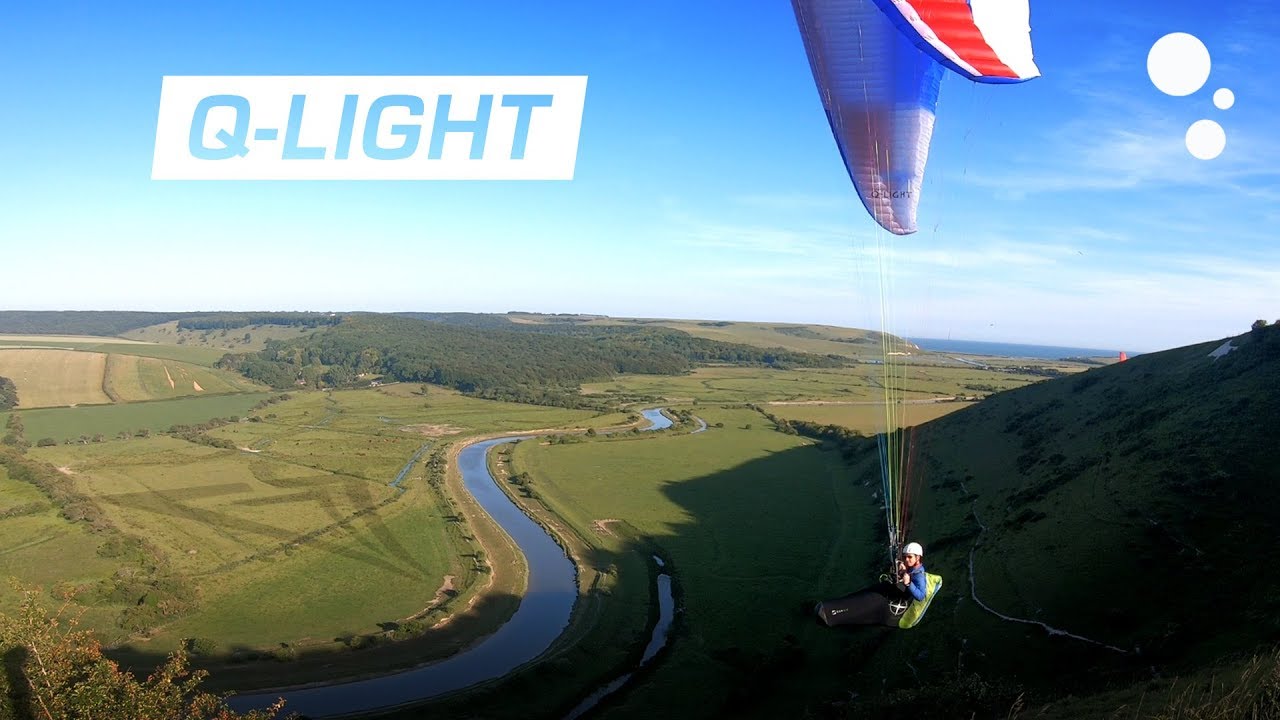
As an experienced hike-and-fly enthusiast, a lightweight C is something I am interested in, so I was excited to receive the Q-LIGHT for testing. Triple Seven say “The Q-light is the ideal tool for long, difficult hike&fly adventures in remote mountain areas. It has a high passive safety level in combination with performance that is way out of its class.”
In the quest for getting lighter, some manufacturers turn to ultralight cloth, some make the risers out of string, and some try to reduce the elements in a wing. This is more easily achieved in the lower classes where the number of cells is reduced and construction can be simpler. As the wing becomes more performance orientated, it gets harder to strip things out, as the tolerance for fabric deformation becomes unforgiving.
Triple Seven Q-LIGHT: construction
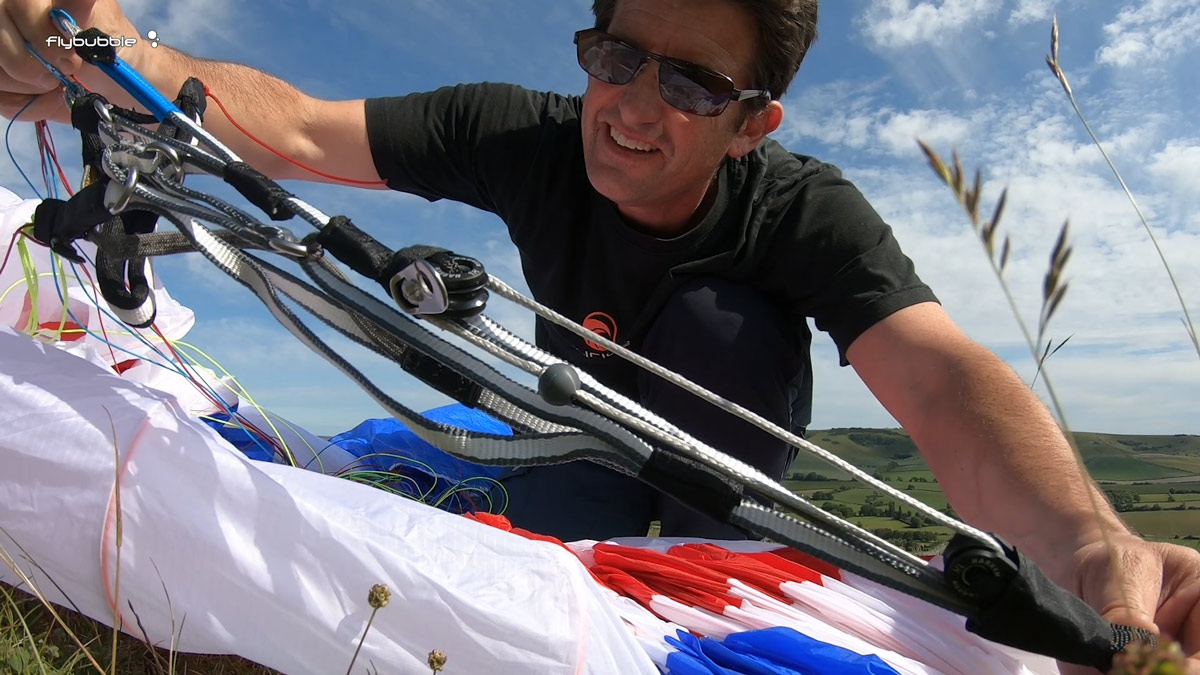
At 4.2kg for the MS (79-99kg) it is clear that Triple Seven have not become fanatical about stripping weight off the wing – it has a sensible reduction from the QUEEN 2 (5.1kg), but has retained a lot of the reinforcing and structure. It also has 73 cells (Omega Xalps has 63, the Zeolite 64). This makes the pack volume less than a standard wing but larger than an ‘ultralight’. In practice I rolled the wing around my flat-packed harness and had no problems fitting it into an 80L bag with my gear.
The risers are slim flat dyneema webbing and are simple to use. The B-C bridge is very simple and effective, you simply slot your finger in between the rear riser and the B riser and pull downwards to engage the webbing strap. This ensures a smooth and linear deceleration without wing deformation.
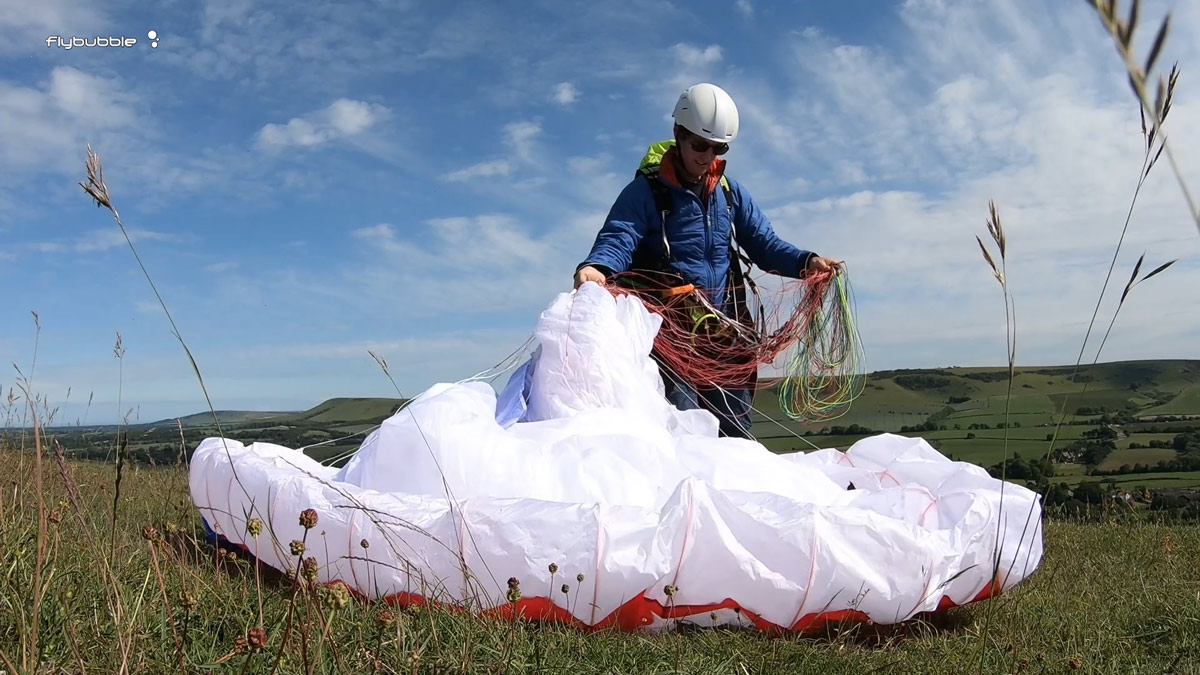
Wavy reinforcing rods within the wing run along the ribs towards the trailing edge, that Triple Seven says “translates into a higher resistance to collapses, better energy retention and not least significantly improved gliding performance through turbulent air”. Bending the rods is unavoidable during packing but they are thin and seem to spring out without much memory. I still wouldn’t want to leave this wing tight-packed in a small hike-and-fly bag – rather let it expand a bit during storing.
Triple Seven Q-LIGHT: on the ground
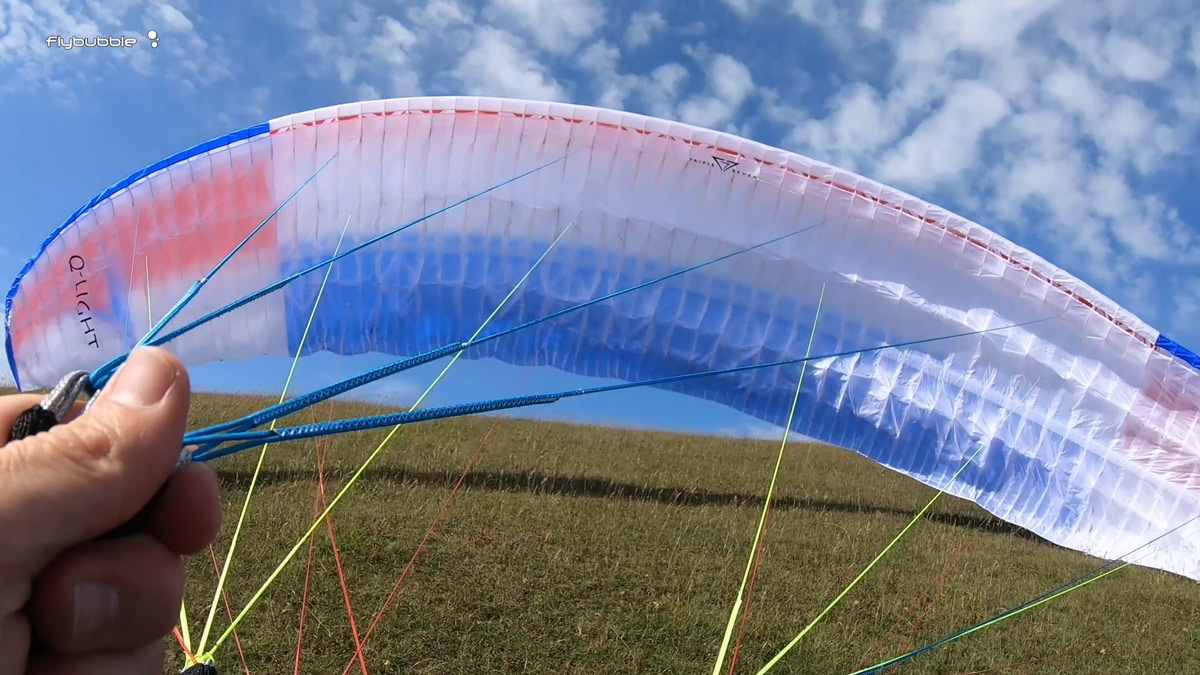
The launch behaviour puts it towards the top of the Sports Class, demanding that pilots who have just upgraded to an EN C work on their launch control before venturing onto steep thermic launch sites or gusty crosswinds.
Experienced pilots will have no problem with this once they have adjusted to the way the wing behaves. Similarly to the Peak 4, it likes to shoot slightly ahead of the pilot on a slope, and if you catch it too hard on the brakes it will stall from fairly high angle, so your timing needs to be well developed. It’s also a bit challenging if the wing goes skew on launch. Trying to turn it will cause the tip to peel back while the body of the wing continues in its surge. Again, simple enough to manage with practice and nowhere near as demanding as most two-liners. The lighter weight makes it slightly easier to lift up than the Queen 2, whilst still being easy to pin down in stronger winds.
Triple Seven Q-LIGHT: in the air

Looking at the leading edge and feeling it in the air, it seems to have some genes from one of my favourite high-performance wings, the Icepeak 6. It has a lower aspect ratio which makes it more manageable, compact and far less bendy along the span. But it has some two-liner feeling about it that makes it feel powerful and oriented towards competition flying. Although it still offers moderate feedback, it’s quite rigid in the turns, and has that resistance to sudden direction changes that makes it feel ‘restrained’ rather than ‘sporty’.
If you are flying fast on glide and hit a strike of lift, and try to initiate a turn, it continues on its current trajectory with a delay before redirecting into the turn. The benefit of this kind of behaviour is a steady nature that is not reactive in rough air, and gives you lots of confidence to push on during tricky transitions. This suits pilots who are looking at long distance XC flying, and want the wing to support them all day long.
If you get a bit physical and throw in a bit of weight shift you can crank it around fast enough when you need to. The lower aspect ratio helps keep the turn radius smaller than the hotships.
Triple Seven Q-LIGHT: Performance

The excellent climbing nature means you will be keeping up with the top dogs during thermaling. It is best suited to wonderfully efficient steady turns in light lift, or established banks in stronger stuff. It’s not as good in scratchy conditions, where it lacks some agility.
In the air it feels determined, and it wants to fly fast. I regularly used the accelerator, and felt comfortable on bar, although it still has the normal demands of a three liner on accelerator and I was working the bar in and out to avoid deflations. Alternatively, use the B-C bridge for rear riser control, which gives you a secure feeling from the pressure. In practice I used a combination of both techniques, and while I found the wing had high passive safety and good resistance to turbulence, it requires some active management.
The top speed is good, around 54km/h, and I’d guess it’s as good as you’ll get within the current C wings. It retains relatively good glide performance at full speed, again at the top of the class in my estimation.
Triple Seven Q-LIGHT: Who is it for?
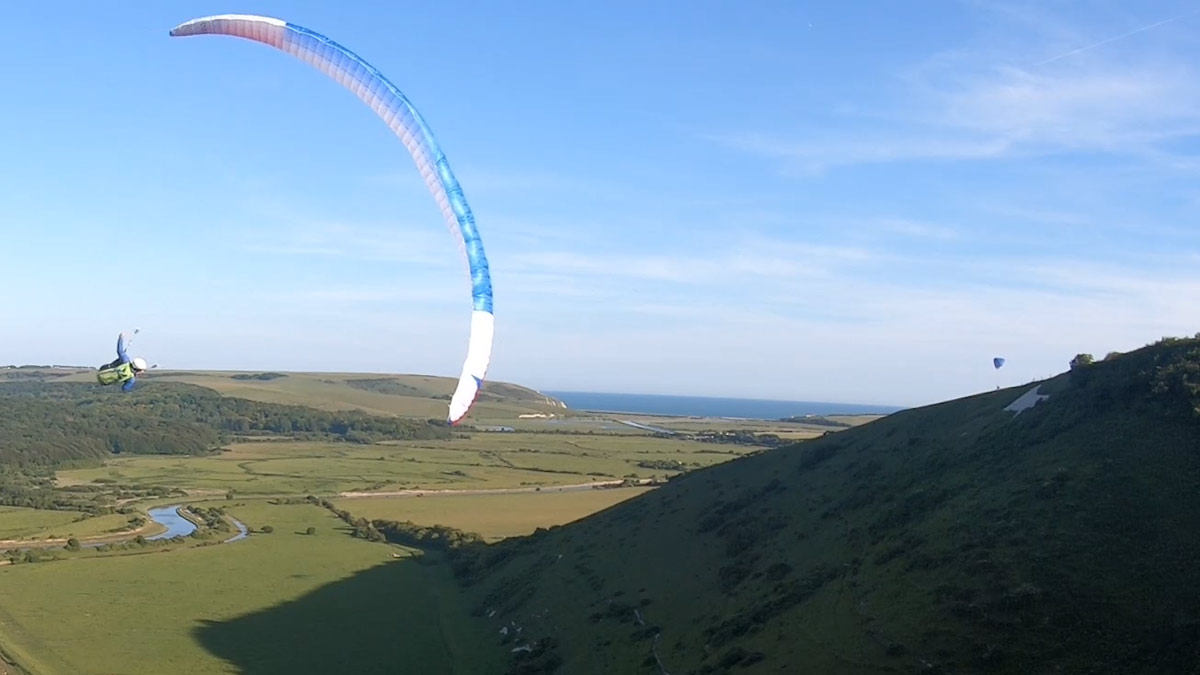
If you’re an experienced Sports Class pilot and you’re wanting to try your hand at competitions and at least stay within striking distance of the lead gaggle, this is a good choice. If you’ve got at least one XC season on an EN C wing you’ll adapt fast to the Q-LIGHT’s determined nature and you’ll love the performance combined with great stability.
If this is your first EN C wing, you might have to spend some time developing your launch skills and weightshift timing to get the best out of this wing. It’s ‘mildly demanding’ for low-airtimers, but once airborne it’s pitch stable and balanced.
There’s no yaw, little roll, and turns feel very efficient. It feels trimmed, taut, steady and relatively fast … designed for long days in the mountains, chasing distant goals.
Find out more about the Triple Seven Q-LIGHT
Triple Seven Q-LIGHT: Video review
Fresh from flying XC over the South Downs, Greg chats about the Q-LIGHT
Brought to you by Flybubble
Like what we do? The best way to thank and support us is to buy gear from us and recommend us to others. Review our service on Trustpilot and our products on Flybubble Shop. You can also subscribe to Flybubble Patreon. Thank you!

